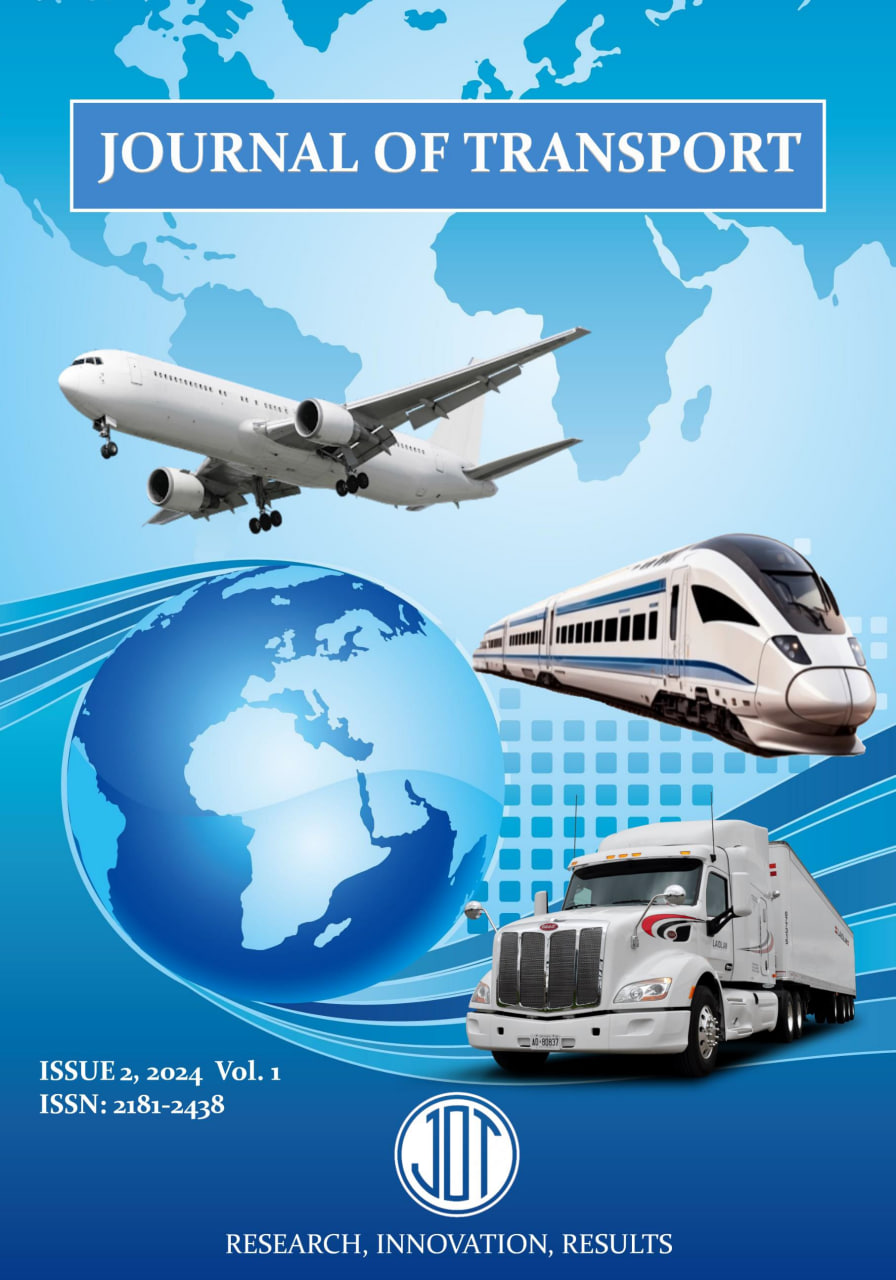Method for calculating the idle time of wagons with processing depending on the number of shunting locomotives operated at a section station
Abstract
The instructions for organizing wagon flows on railways recommend calculating the wagon-hours spent on the assembly of wagons according to the established criteria on each section of the train formation route based on the assembly parameter, and its exact values are determined by drawing up a daily work schedule. This article improves the method for calculating the dwell time of transit-processed wagons depending on the number of shunting locomotives used at the railway section station. As a result, it was possible to calculate the dwell time of the processed wagons with 2 times more accuracy (relative error 3.5%) than the analytical method, and it was shown that the relative error behind the analytical and graphoanalytical methods is 7.0%.
References
[2] Butunov D. B. Saralash stansiyalarining vagon oqimlarini tashkil etish va boshqarishni texnik-ekspluatatsion baholash usullarini takomillashtirish. Texnika fanlari bo‘yicha falsafa doktori (PhD) dissertatsiyasi. Toshkent: ToshtYMI, 2019. – 187 b.
[3] Sotnikov YE.A., Shapkin I.N. Ekspluatatsionnaya rabota na jeleznix dorogax mira / Jeleznodorojniy transport. – 2009. – №1. – S. 72-78.
[4] Texniko-ekonomicheskiye rascheti v ekspluatatsii jeleznix dorog (v primerax i zadachax) / I.B. Sotnikov, A.A. Vignanov, F.S. Gomankov i dr.; pod red. I.B. Sotnikova. – M.: Transport. –1983. – 254 s.
[5] Kudryavsev V.A. Upravleniye dvijeniyem na jeleznodorojnom transporte. M.: Marshrut, 2003 – 200 s.
[6] Christian Meirich, Nils Nießen. Calculating the maximal number of additional freight trains in a railway network / Journal of Rail Transport Planning & Management, Volume 6, Issue 3, 2016. – P. 200-217.
[7] Jaafar, A., Sareni, B., & Roboam, X. (2013). A systemic approach integrating driving cycles for the design of hybrid locomotives. IEEE Transactions on Vehicular Technology, 62(8), 3541-3550.
[8] Sun Y., Cole C., Spiryagin M., Godber T., Hames S., Rasul M. Conceptual designs of hybrid locomotives for application as heavy haul trains on typical track lines // Proceedings of the Institution of Mechanical Engineers, Part F: Journal of Rail and Rapid Transit. 2013; 227(5): R. 439-452.
[9] Wang B.H., He S.W., Song R., Wang B. Stochastic dependent-chance programming model and hybrid genetic algorithm for car flow routing plan // Journal China Railway Society. –2007.–№29. – pp. 6-11.
[10] Tipovoy texnologicheskiy protsess raboti uchastkovoy stansii. M.: Transport, 1988 – 57 s.





